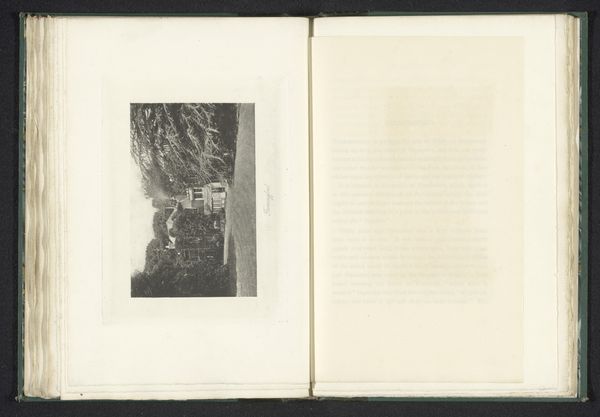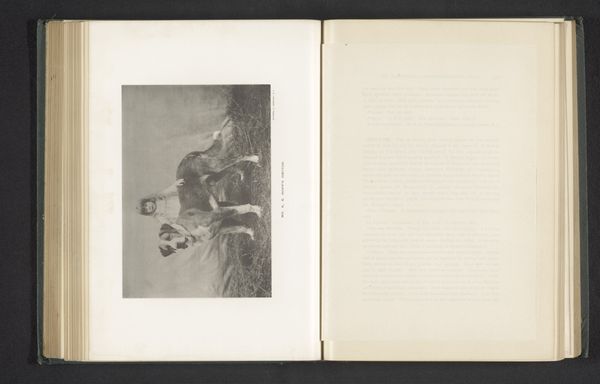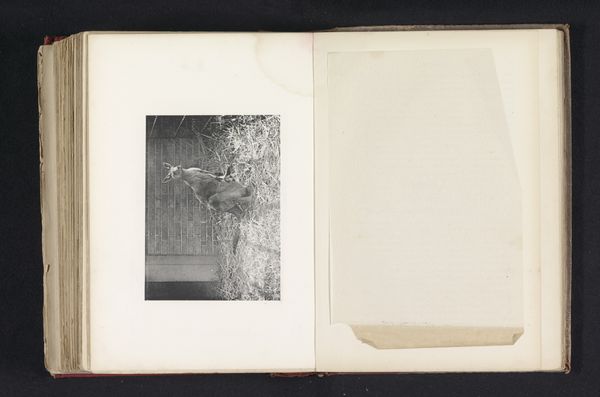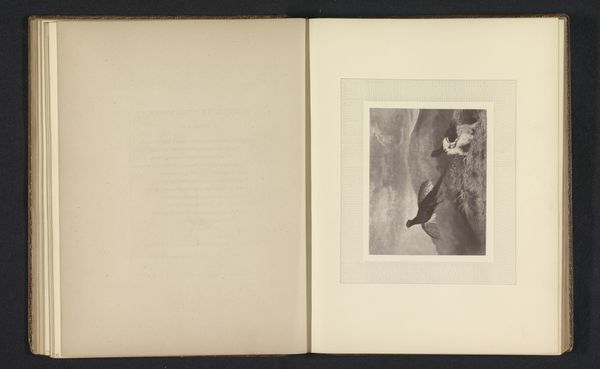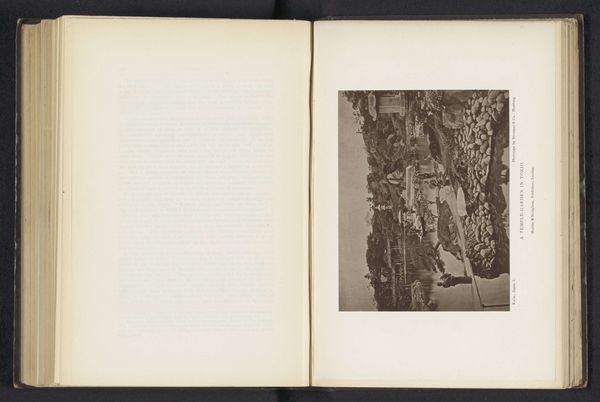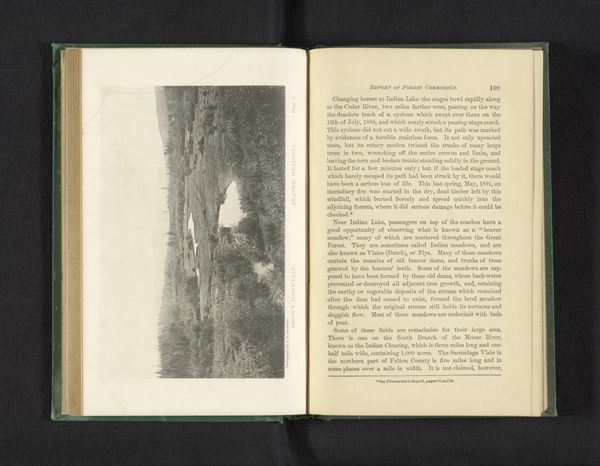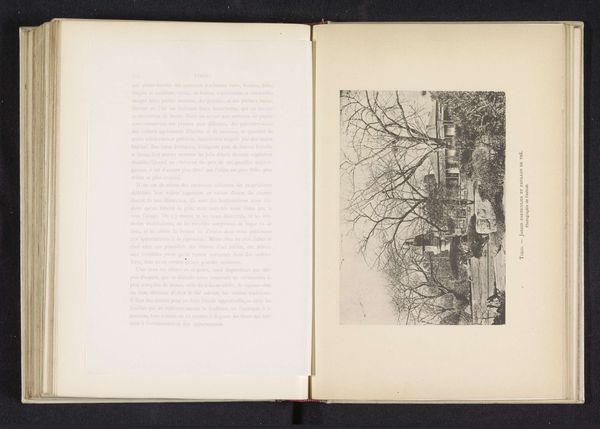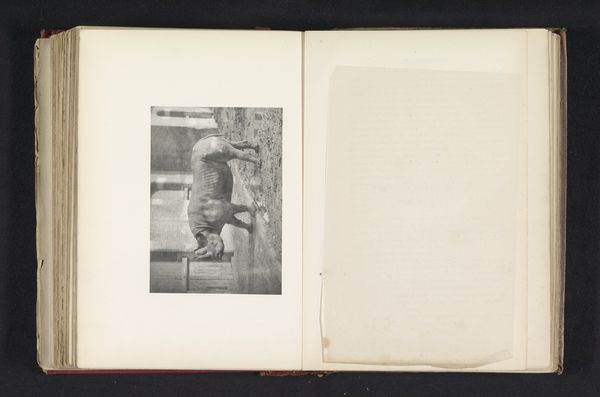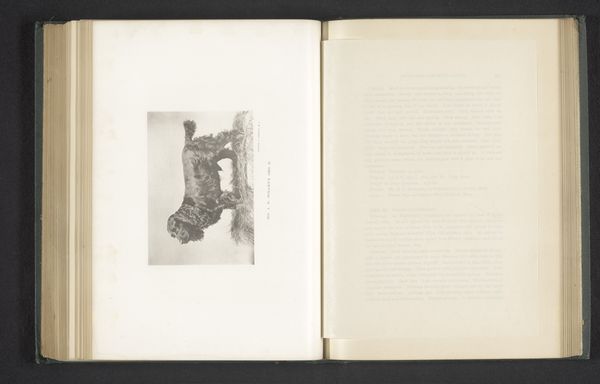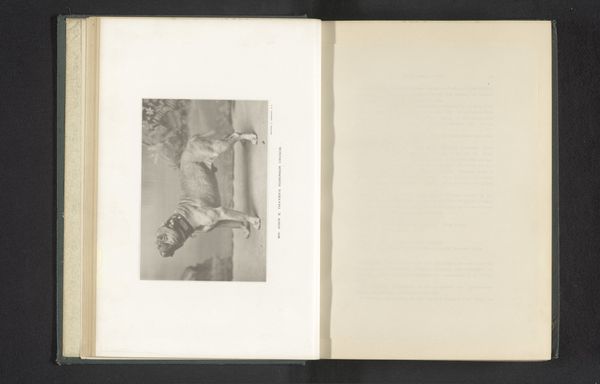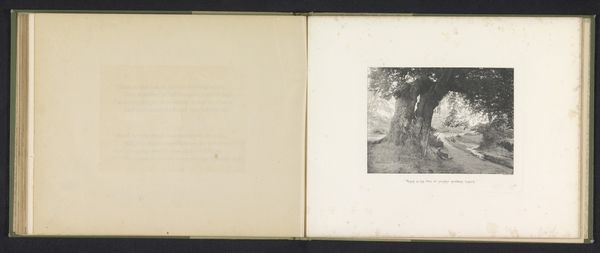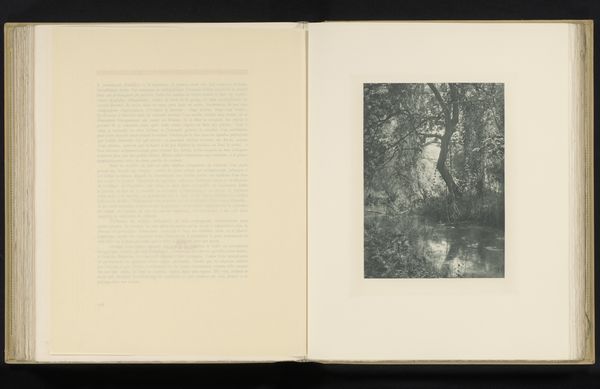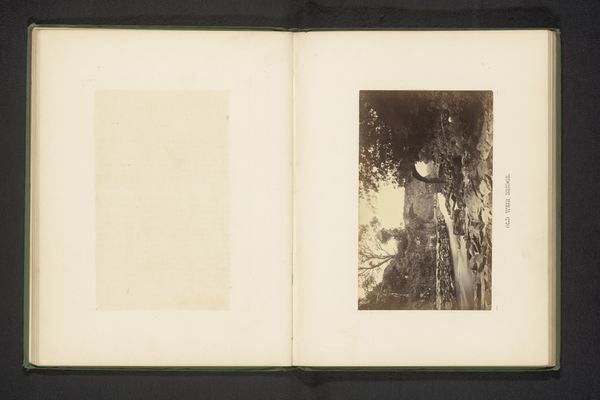
photography, gelatin-silver-print
#
portrait
#
script typography
#
paperlike
#
hand drawn type
#
personal journal design
#
photography
#
hand-drawn typeface
#
folded paper
#
gelatin-silver-print
#
thick font
#
delicate typography
#
thin font
#
realism
#
small font
Dimensions: height 108 mm, width 147 mm
Copyright: Rijks Museum: Open Domain
Editor: So here we have "Engelse Pointer", a gelatin-silver print dating from before 1888. It's part of an open book. On the left side we see the photo of a dog, on the other there is dense typography, hard to decipher at first sight. I wonder why photography would be integrated into what looks like a journal. What strikes you most about this work? Curator: This image encapsulates the burgeoning intersection of industrial processes and the domestication of animals. The gelatin-silver print was itself a product of mass production and chemical innovation, allowing for widespread distribution of images. To juxtapose it with text that reads like a personal, possibly even scientific journal, really asks us about knowledge production and value. Editor: That's fascinating! So, the very materiality of the photograph and book speaks to mass production... does that challenge the idea of a unique artwork? Curator: Precisely. Before widespread photographic reproduction, images, particularly portraits like this one, would be created on a case by case basis. This, on the other hand, points to a breakdown of that separation of labor. Think about the materials used – gelatin, silver, paper – all part of interconnected systems of trade and manufacture, creating this specific image, this object, this record of, well, a dog. How do the aesthetics play into its value? Editor: I guess the contrast between the dense, almost unreadable text, and the clarity of the photograph creates a kind of tension between the scientific and the personal? Maybe it is like keeping a log? Curator: Exactly. And how does the depiction of a domestic animal reflect the society of that time? What does the breeding, ownership, and representation of this pointer signify about class and control of nature? Editor: This really gives me a different perspective of considering how it all contributes to this moment. Curator: Indeed. Paying attention to these relationships can offer richer insight.
Comments
No comments
Be the first to comment and join the conversation on the ultimate creative platform.
